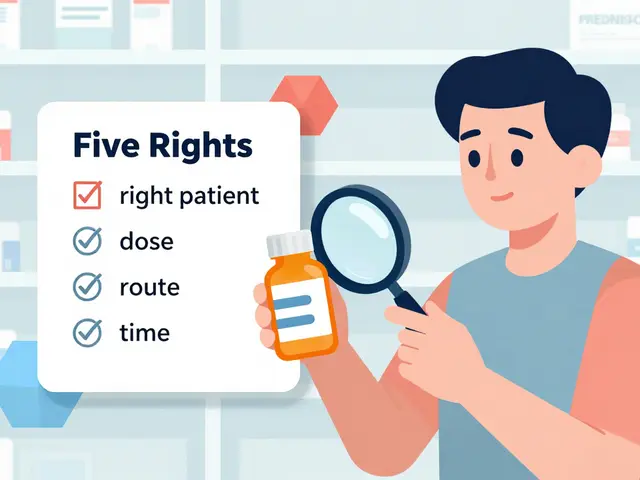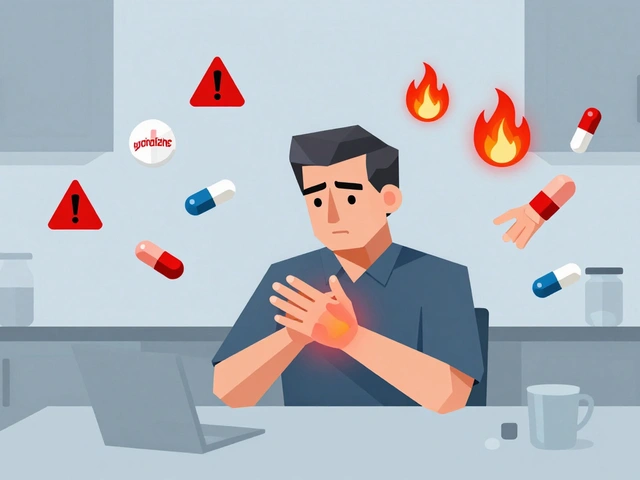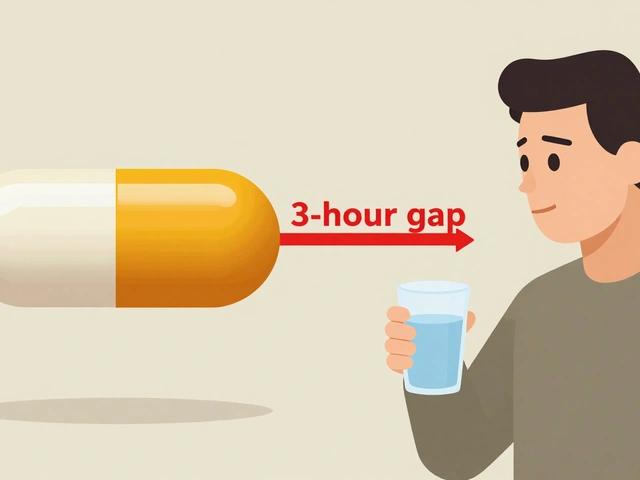Toprol (metoprolol): What it does and how to use it
Toprol is a brand name for metoprolol, a beta-blocker used for high blood pressure, chest pain (angina), certain heart rhythm problems, and to help after a heart attack. The most common form, Toprol-XL, is an extended-release pill taken once a day so levels stay steady. Knowing what it treats and how it works helps you spot problems early and use it safely.
Doctors pick metoprolol because it slows the heart and lowers blood pressure. That reduces strain on the heart and lowers the chance of chest pain or further heart damage. There is also an immediate-release form (metoprolol tartrate) that is usually taken twice daily for short-term needs. If your prescription says Toprol-XL, stick to once-daily dosing unless your doctor tells you otherwise.
How to take Toprol safely
Start with the dose your doctor prescribes — common starting amounts are 25–50 mg daily. Many people sit on 50–200 mg once a day as a regular dose; the labeled maximum for the extended-release form can reach 400 mg in some cases. Take it at the same time each day, with or without food. Don’t crush or split extended-release tablets unless a pharmacist says it’s safe.
Stopping suddenly can cause a fast heart rate, chest pain, or high blood pressure. If you need to stop, your doctor will usually lower the dose slowly over a week or two. If you feel worse after stopping, call your provider. Also tell doctors about Toprol before surgeries or new prescriptions.
Common side effects and interactions
Expect some tiredness or lightheadedness at first. Other common effects include slow heartbeat, cold hands or feet, sleep changes, and less interest in sex. Serious signs that need quick care are fainting, very slow pulse, shortness of breath, or swelling of the ankles.
Metoprolol interacts with several drugs. Avoid mixing it with strong calcium channel blockers like verapamil or diltiazem unless your doctor monitors you closely — those combos can slow the heart too much. It can hide low blood sugar signs in people using insulin or pills for diabetes. Some antidepressants, certain asthma drugs, and strong heart rhythm medicines also change metoprolol levels. Always list all medicines and supplements to your provider.
If you have asthma, very low blood pressure, severe slow heart rate, or certain types of heart block, metoprolol may not be right for you. Pregnant or breastfeeding? Talk to your doctor — sometimes the benefits outweigh the risks, but you need a plan.
Generic metoprolol succinate is widely available and usually cheaper. Buy from a licensed pharmacy, keep the medicine in a cool, dry place, and check the label when you get it. If you notice anything unusual after starting Toprol, call your doctor — some side effects settle in a few weeks, but some need timely fixes.
Keep a simple log of blood pressure and pulse for the first month. Bring it to follow-up visits. If you take other heart drugs or have diabetes, share readings and symptoms. Clear notes help your doctor adjust treatment and avoid problems. Ask questions at every visit always.
Toprol is a commonly prescribed beta blocker that helps manage high blood pressure, heart failure, and other heart issues. This article covers how Toprol works, its real benefits and possible side effects, as well as practical advice for people who take or are considering this medication. You’ll also find information about what to expect, alternative treatments, and everyday tips for living better with heart medicine. If you want a down-to-earth guide that makes sense of the facts without scaring you, this is for you.
Continue reading...






